Do you love food blogging and really see this as something you’d want to do full time?
Does managing and keeping your food blog up and running cost more than what you make every month in revenue and profit?
Do you want to start a food blog but are unsure if it can actually make you money?
If so, you have yourself one of the easiest problems that any food blogger can ever run into – the failure to monetize.
And the best thing about his is that it can be fixed within minutes.
You see, there are so many ways to help you make money food blogging and truly turn this into a full time business that stays profitable. But what in the world are they?
Well today, you’re in for a treat because I put together a complete list of food blogging monetization strategies.
Some are proven.
Some are controversial.
Some will make you money today.
Some take time.
But they’re all here in this listing.
So let’s get straight into it this complete guide on how to monetize your food blog.
Advertising Networks
Implementing ads via an advertising network is one of the easiest and quickest ways to monetize your food blog. The hardest part is choosing the right one that’s perfect for your site and audience. Although some do have special requirements for traffic, page-views, and audience type, most of them are fairly easy to apply and join.
1. Google Adsense: The largest and perhaps the most well known of the ad networks that offers display advertising, mobile, video, and and search monetization. It’s free to sign up and Adsense will generally accept even the smallest of websites, so this is a must have if you’re just starting out.
2. Media.net: Get access to millions of sponsored display ads and contextual ads from the Yahoo! Bing network. It’s easy to join and they have fairly lenient requirements, so give it a shot!
3. Sovrn (formerly known as Lijit): If your website gets a lot of impressions then this is a great program to use. Plus, you’ll even get some pretty cool audience analytics including average household income, gender, age, ethnicity, and family size.
4. BuySellAds: As a publisher, you’ll list your ad inventory (size of your ad) and CPM for each ad zone and you’ll start to receive requests from advertisers to post an ad on your site. This is a great Adsense alternative because it allows you more control on what ads and messages are being displayed on your site.
5. Conversant: Display ads from 5,000 leading brands, including more than 400 blue chip companies.
6. AdBlade: This is an ultra premium ad network that only accepts websites with massive traffic. If you’re just starting out, this will be of no use for you. Once you hit 500,000 monthly pageviews, you should definitely consider joining.
7. BlogHer Ads: If you’re a women that runs a food blog with an engaged audience, then this is an absolute MUST HAVE. You’ll be part of a massive community of women content creators.
8. GLAM Media: Monetize your content by becoming a GLAM content creator which also give you access to targeted brand display advertising on your blog.
9. Chitika: One of the largest networks in the world. Chitika focuses on display, in-line, and text ads. This is a decent alternative to Google Adsense. However, you should expect to pull in low earnings. (see image below for example)
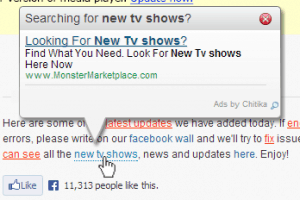
via MonetizePros.com
10. Martha’s Circle: A difficult ad network to get into but once you do, you’ll see increased earnings and sponsorship opportunities. They generally only accept popular blogs.
11. Live Intent: This network allows you to monetize your email newsletter using display ads. Plus, they seamless integrate with email service providers like MailChimp. However, you must have at least 3 million monthly email open impressions. So if you’re list is too small, then you should consider NewsletterDirectory.co (see below). Or you can use this technique to explode your email lists growth!
12. Gourmet Ads: This network focuses only on delivering food and wine ads to food bloggers.
13. Infolinks: One of the biggest, if not the biggest online ad networks that focuses on in-line ads. It’s easy to implement thanks to a WordPress plugin. The earnings from these ads are pretty good but they will fluctuate often. Using an in-text ad network is one of the best ways to fight “banner blindness.”
14. Amobee: An alternative to Infolinks that has more relevant ads than Infolinks, however, doesn’t make nearly as much revenue.
15. Tribal Fusion: Qualified publishers with over 500,000 monthly unique visitors are able to run in-text ads, lead generation portals, and other monetization opportunities.
16. Vibrant Media: This network focuses primarily on in-text ads. Here’s an example of their ads in action.
17. Bidvertise: Pay Per Click (PPC) ads that will make you money when someone clicks on an ad their interested in.
18: Undertone: This ad network specializes in high impact ad units, which typically means the ad units will disrupt your reader’s experience in order to get the ad message in front of them. These high impact ads can include pop-up ads that appear over the site’s natural content. While most of your blog’s visitors might see these as annoying, the fact is that they’re very effective at drawing attention to the ad’s content, thus meaning that advertisers are willing to pay premium CPMs to get to these ad placements on your site and in front of your audience.
19. Sulvo X: 100% revenue share. ‘Nuff said. Plus through this program you work directly with the advertiser to negotiate the best rate for your ad space.
20. Swoop: Instead of showing banner ads, Swoop focuses on providing content ads, meaning that when some clicks on one of their in-content ads, they’ll be taken to a relevant article. For example, if you have a blog post about a red velvet cupcake recipe, you’ll see an ad at the beginning of your blog post that links to a cream cheese cupcake icing article. Swoop really aims to keep it’s referral content as relevant as possible.
21. Yellow Hammer: Adds high impact ads to your blog that are highly targeted and customized based on location.
Selling Ad Space
22. Sell ad space directly to an advertiser: Basically, set aside a spot in your sidebar for advertisers who are willing to buy ad space directly from you. Yes, you can use Buy Sell Ads to simplify this process, if you’re looking to work one on one with a smaller advertiser, selling your space directly to them is the best option. One of the best ways is to create an ad box and encourage people to advertise in that spot by telling them to learn more about why they should advertise on your site. Here’s a graphic that you can create and place somewhere on your blog’s sidebar.
Then from there, link to an advertising page like this one on Kikolani. And once you agree on your ad terms, just receive payment via Paypal. It’s that easy and hassle free
Sponsored Posts & Working with Brands
23. Taboola: Buy using an advertiser and service like Taboola, you will have related content links on the bottom of your blog posts. In sort of like a related posts plugin for WordPress, except for that instead of linking to your own content, you link to other people’s content – and get paid. Before you use Taboola, just be sure you have at least 500,000 pageviews every month.
24. Outbrain: Just like Taboola, only except for the fact that the related posts seen on your site are based on your viewer’s personal browsing history. And they have a 500,000+ pageviews requirement.
25. Join Izea: Get paid to write about products from big brands on your blog and share them throughout your social network. The opportunities available are based on the size of your social network.
26. Reach out to companies and brands directly: Although you can always find a way to work with a company through a network like Foodie Blogroll or FoodBuzz, working directly with the brand is a great way to truly build a real relationship with the brand. Plus you may even be able to work out a better agreement when it comes to profit sharing and sponsorships. So just pick up the phone!
27. Answer those PR email blasts: Have you every received an email from a PR firm looking to talk to you about this awesome, life changing product? If so, before you hit spam, junk, or delete, you should definitely just take a quick peek at this email because sometimes, you’ll find yourself a diamond in the rough. They sometimes may offer a media kit, but other times they may offer you a free sample. And if they do, then you must respond! So basically, once you find something that’s interesting and could be perfect for your food blog, reply back to that email and ask for a free sample. Or better, you can reply with something like thiis:
This looks awesome (insert name here) but as of right now I charge (enter $ amount) for sponsored posts and reviews.
Even if they don’t “have the budget” for paying you, there’s a good chance that they’ll try to compromise by offering a you and your readers a free sample that you can later give away via a contest.
Affiliate Programs
Joining an affiliate program is a great way to make money promoting products and services you love. Basically once you refer a product through an affiliate program and the customer makes a purchase, you’ll get a commission. It’s that easy! Here are some affiliate programs that you can join.
28. ShareASale: Similar to CJ and Linkshare but offers different advertisers (over 3,900 of them). My personal favorite.
29. Amazon Associates: By using this affiliate program, you’ll be able to refer an Amazon products and make a commission if someone were to buy it. This is a must have especially if you like promoting cooking utensils and other kitchen friendly equipment on your food blog.
30. CJ Affiliate by Conversant: One of the oldest and largest affiliate network with over 3,000 advertisers. And the best part of it all is that anyone can join, no matter the size of your blog.
31. Rakuten Linkshare: This affiliate network is quite similar to CJ however, they have half the amount of advertisers. But don’t let that fool you. You’ll still find some big name brands on Linkshare that you won’t find at CJ.
32. PeefFly: On PeerFly you’ll be able to promote some big name companies like Disney, Target, Folgers, Six Flags, and more.
33. Clickbank: The biggest difference between Clickbank and the rest of these affiliate networks is the fact that you can promote information products sold by other bloggers. Plus, if you want to sell your products in the Clickbank marketplace, you can also create your own affiliate program that will pay commissions to anyone who refers your products.
34. Skimlinks: This is a plugin and service that will scan your blog’s content for any product or service links and turn them into an affiliate link. So if you were to promote a “Hamilton Beach Mixer” Skimlinks will grab that word and add an affiliate link to it. Then if someone were to buy it through that link, you’ll make a commission. It’s so simple, yet effective.
35. Viglink: Just like Skimlinks, Viglink will monetize existing links.
36. Awin: You’ll be able to promote more European and UK based companies and brands.
37. AvantLink: Access to other advertisers you wouldn’t find elsewhere like Under Armor.
38. Flex Offers: If you’re looking for a way to promote credit cards on your food blog, especially those that offer 2-3x the points on dining and groceries, then this is a great program to check out.
39. Impact Radius: This network is all about analytics and tracking when it comes to your affiliate links.
40. Go straight to the company (In-House): Using an affiliate network is great. But sometimes, you actually can make more money and get better commissions and deals by going straight to a company. By working directly with the company, you’ll open the door to countless opportunities that you won’t get using an affiliate network.
Start Your Own Video YouTube Channel
Starting a YouTube channel by using your food blog’s brand (or your personal brand) you’ll be able to reach a completely new audience and possibly even demographic. Then from these videos and vice versa, you can build a community of subscribers who can eventually even become new blog subscribers. Plus, you can also monetize your YouTube videos to make additional income.
41. YouTube Partner Program: Monetize your videos. Plain and simple. Just make sure you have at least one video up and running that monetized on YouTube. Also, the benefit of this program is having access to YouTube spaces, channel customization, educational classes, and more.
42. Google DFP Video: This allows you to have full control over what kind of ads are going to appear before your video plays.
43. Become a Motionmaker at DailyMotion: By joining this program, you’ll be able to monetize your videos on Dailymotion, a great alternative to YouTube
44. Work on collaborations with brands and other YouTuber: Cross promoting and establishing partnerships with brands and other video creators is a great way to make money food blogging.
45. Place your videos on your site: Now although encouraging people to go check out your videos on YouTube is great, a better way to make additional revenue and even increase click-throughs is by embedding your videos onto your website. That way when people want to watch your videos, you can make money from the ads already on the video, as well as other ads on your site.
46. Join a YouTube content network: By joining a network such as Fullscreen, you can boost your ad earnings and find sponsors for your video content.
Sell Your Own Cookbook & eBook
47. Sell a print book: If you have a lot of great recipes, personal stories, or other information that you would love to share and still make money, selling your own print book is a great way to do it. My recommendation is going the self-publishing route because it’s easier to do and you’ll still be able to sell your books on Amazon and Barnes and Noble. Check out Createspace or Lulu!
48. Sell an ebook: Selling an eBook is just like selling a print. The only difference will be formatting and where you will send it. My recommendation is to go through either Lulu or Smashwords if you’re getting started. Or you can try KDP by Amazon (see more in #54). These online e-publishers will sell your books in Amazon Kindle, Kobo, Apple iTunes, Barnes and Nobles Nook, and other online book marketplaces. Here’s a great way to make 1,000,000 selling eBooks.
49. Give away your eBook for free and still make money: I know this sounds crazy but if you publish your book through KDP by Amazon and join the KDP Select program which is where you only publish your ebook on Kindle and no where else, you will make a certain amount of money based on your monthly downloads. Learn more here.
Sell Your Own Products
50. Sell you readers a valuable product: Whether if it’s a how-to-guide for food photography and style or a meal planning template and worksheet, selling your own product is a great way to monetize your food blog business. I personally use Gumroad to sell all my information products.
51. Start an eCommerce store: Sell custom t-shirts, magnets, laptop stickers, mugs, etc, all of which have your blog’s or brand’s logo on them.
Start a Membership Sites
52. Have your readers join a monthly or yearly membership site: If you’re looking to charge for your content or super specific and valuable information that would be crazy if it were free, then creating a membership site is the perfect way to go. Plus, by offering other incentives like members only access to products, guides, special forums, and community groups, you’ll be able to truly make it worth their money. So if you’re looking to create your own food blog membership site, be sure to use Wishlist Member.
Create a Software
53. Sell your own software service: Is there a service or software out there that a food blogger will find beneficial? You know, like a nutrition label generator. If so, then making a software could be a great way to go. Yes, this may be a long shot, but if there’s a service out there that has a need that needs to be filled, then creating a software may be right for you. And if you don’t know how to code or create a software, you can always check out these awesome online classes on Skillshare.
Launch a Mobile App
54. Create an app version of your website: Although many websites nowadays have responsive themes that look great on phones, there are time when an app version of your food blog could do the job better. Just look at Buzzfeed and their app. Now the reason why I consider this a monetization strategy is because you can still ad mobile advertisements onto this app or make commissions through product referrals and leads.
55. Launch a paid: If you have an idea for an app that will compliment your food blog (such as a recipe app, a cookbook app, a calorie counter app, food photo editing app, etc) then creating and launching a paid app is the a great way to truly monetize your food blog business and brand. Nom Nom Paleo did it and so can you.
56. Launch a free app: Although you won’t make money initially with a free app, the monetization occurs once you implement a mobile ad network (see below for some examples) Plus, with a free app, you can always up-sale your users by asking them to upgrade to a paid premium version of your app. Or better, you can encourage your free app users to check out some products or services that you offer on your blog. A free app is a great way to get a lot of users as well build an email list.
57. Admob by Google: If you have a free app that you would like to monetize then using Admob by Google is the best option.You can create text or display ads that integrate seamlessly with your app. In order to get started, you need an Adsense account.
58. AirPush: Using AirPush, mobile ad network, will allow you to add disruptive advertisements to your iOS, Android, or Windows. Here’s an example below.
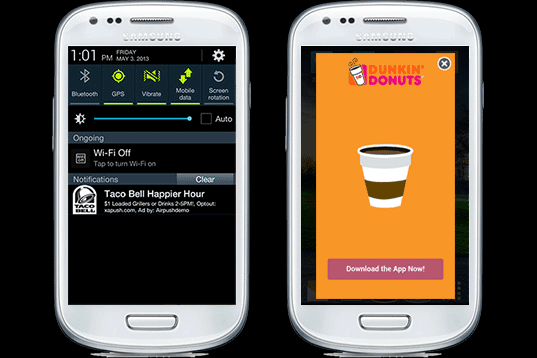
via MonetizePros.com
59. iAd: If you have an iOS app that you would love to monetize, iAd by Apple will allow you to do so. This will ultimately allow you to promote your app and make more product and app sales.
Sell Your Food Photography
60. Sell the rights to your photos: There will be times when you take a food photo so beautiful and so mesmerizing that a magazine publisher or website may want to buy the rights to your photos. If the price is right, you should definitely consider it.
61. Sell your photos on StockFood: If you have beautiful photos of food, be sure to submit photos to StockFood.
Indirect Ways to Make Money Food Blogging
Below, you will find a few killer ways to help you make money from your food blog. Now although these 2 methods won’t necessarily make you money, they will ultimately allow you to sell to your audience without feeling guilty.
Build an Email List
Building an email list won’t make you money initially, but it’s a major stepping stone that will open plenty of opportunities for you to promote your products, services, new app, new cookbooks, etc.
62. Build an email list: Plain and simple, building an email list can lead to massive sales – if you do it the right way. By consistently providing value and over delivering, you will be on your way to growing a large and responsive mailing list. Then from here you can start to promote your products, membership sites, etc. And if you don’t know how to grow your list rapidly, here are some clever ways to do it.
Create Killer Content
Creating content is an indirect way to initially monetize your food blog. You will already need to have an ad network or affiliate network already in place in order to truly make money from this. However, creating the right piece of content can open the floodgates of traffic onto your site as well as even improve your overall conversion – if done correctly.
63. Create content that provides value: Although creating content initially is a part of a long game strategy, by consisting creating hot, appealing, and valuable content in relation to your brand’s focus, you will eventually pave the way to a loyal audience and readership. From this, you can then start to throw right hooks and begin selling your own products or promoting affiliates by creating content that sells.
64. Create compelling “click bait” content: Ever seen those posts that have one of those click bait headlines like “These restaurant views are incredible, but it’s what’s on the menu that got everyone talking…” These kind of posts generate a ton of traffic because they’re compelling and make readers extremely curious. So when creating content, try to write posts that will make people want to click on the post and read (or you can always use a headline generator). Then once people get to your site, you can begin to make money through ad impressions or clicks on affiliate links within your content. Creating the content will get people to your site. It’s then up to you to really find a way to convert these browsers into new subscribers, or better, customers.
65. Sell access to your content via a subscription: Sell access to your blog’s content by charging $0.99 a month via Tidbitts. Although this service is still in the works, it’s a concept and food website monetization strategy you can consider in the future.
Additional Methods (Updated June 2017)
66. Build your Snapchat following: This isn’t a direct method to make money with your food blog brand. However, by building your snapchat following, sponsored opportunities and new doors will open up, thus opening up new streams of Snapchat income. One of the easiest way to build your Snapchat follower count is to make your “snap code” your profile pic especially on your Facebook profile picture (for both page and personal accounts.)
67: Build you Instagram following: Just like using Snapchat to build your following, building your Instagram presence will ultimately allow you to get sponsored Instagram opportunities and so much more. Here’s a great guide to help build your Instagram following.
68. Start a subscription box business: If you have a loyal audience, one thing you can do is start a subscription box business featuring your favorite products and other curated goodies that you believe your audience will love.
Well that’s it…
Hopefully you’ll now be able to take these monetization strategies and start to implement them into your food blog business today.
And for more food blogger resources be sure to check out our new guide that will help make your site sizzle.
Thanks for reading!
Cheers.

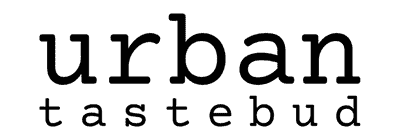
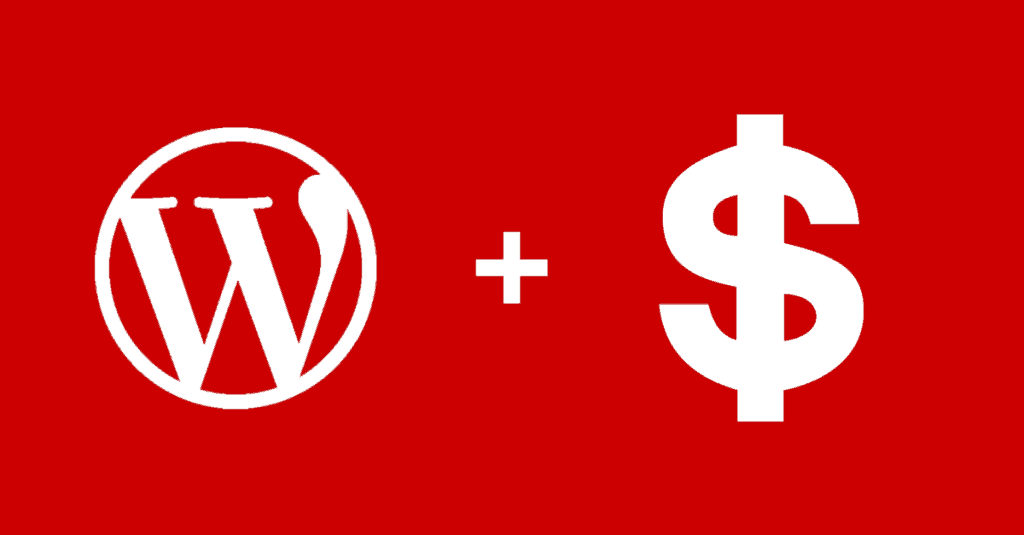

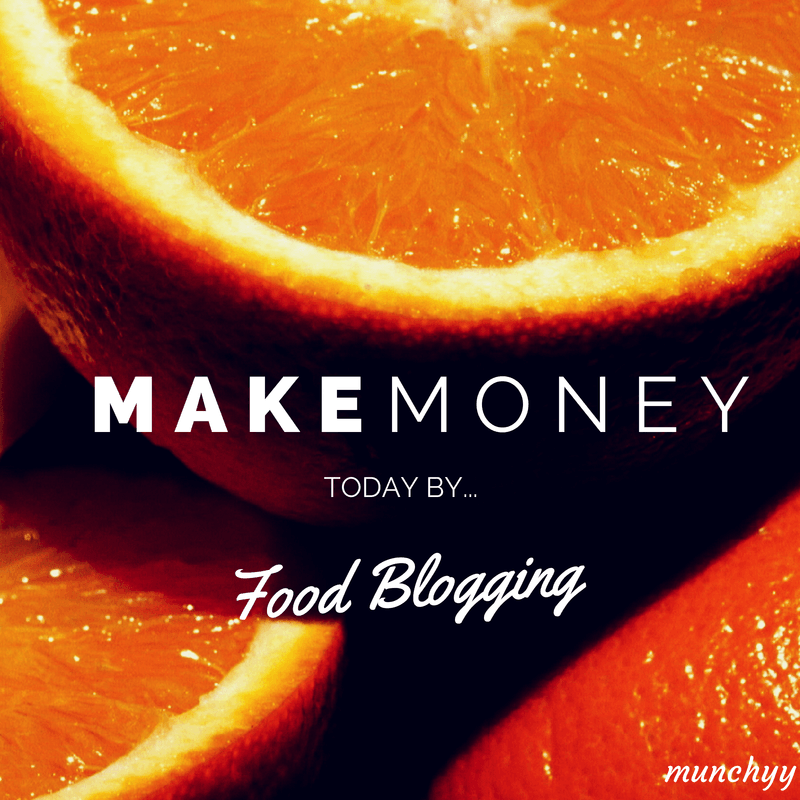
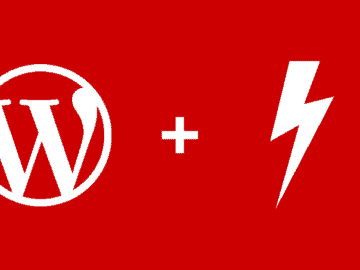
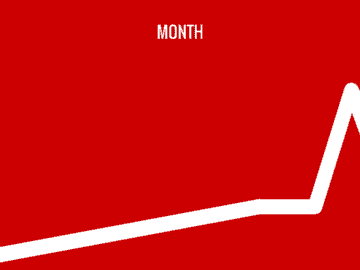


Abhijeet
Hey Adam.
Great Post. Thanks. I specifically love- eBook part and link to Tim’s blog. I am big fan of Tim. I hardly see such a detailed blog post.
I have a question and would love to have your quick advice:
– I am trying to create online course for food bloggers who wants to make more money using eBook. It will have exact action steps to follow.
Do you think this is something food blogger would be interested in?
I would really appreciate your inputs.
Thanks
Lamia
Thanks. It is really useful for newbies
MeemisKitchen
Good and useful article.
Hils Yanke
Make money online
sam
Hey there: Excellent post for newbies and called experts too. Helps us to build a successful entrepreneurship. Thanks for sharing
Jere Cassidy
Finally, the information I have been looking for. Thank you for the great share.
Jim stokes
Media nexus is not good. Their eCPM is very low.
Appsmarche
Thanks for sharing such a excellent post.. I like the way you described….Nice blog…
Sarita Gupta
Very nice blog you have shared here… such a great list of food blog……
mangi
Wow ! Adam Bryan..I dont have to visit other sites..your article is the encyclopaedia of food blogging revenue model.
Rakib Hossin
This is presumably one of the complete articles I’ve gone over on the most proficient method to profit sustenance blogging. Superb thoughts and all around inquired about.
Lynda S.
This is probably one of the most complete articles I’ve come across on how to make money food blogging. Excellent ideas and well researched.
Cheers
Julie Reynolds
Thank you for this information!!…..At present I’m using Envero Media ad network seeing good results and quick response from them.
Anthony Lloyd
Twittered and Google Plus Oned
Great article!!!
14. Advertising.com requires 500,000 pageviews to join. I WISH I had that much.
Adam Bryan
Thanks Anthony! It’s almost like as soon as you hit 500,000 pageviews/month, you’re basically set with every ad network. Hopefully soon, we’ll be able to hit that mark!